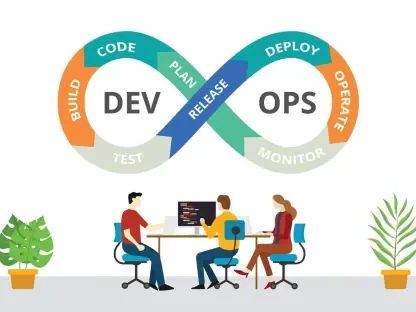In the current technological landscape, Application Programming Interfaces (APIs) have become a fundamental component, enabling various applications and services to communicate with one another seamlessly. With their increased use, securing APIs has emerged as a critical necessity. This article delves into essential API security practices to prevent breaches and threats, ensuring your digital assets remain protected.**Why API Security Matters**APIs are the backbone of modern software architecture, facilitating connectivity and data sharing between disparate systems. However, this interconnected nature also makes them prime targets for cyberattacks. Ensuring API security is pivotal not only for protecting sensitive data but also for maintaining the integrity and reputation of your business.
Robust Authentication Protocols
OAuth 2.0 and OpenID Connect
Implementing standardized authentication frameworks like OAuth 2.0 and OpenID Connect is essential. These protocols streamline secure user authentication and authorization, reducing the likelihood of unauthorized access. OAuth 2.0, for instance, allows users to grant websites or applications access to their information without sharing passwords. OpenID Connect builds on OAuth 2.0, adding an identity layer enabling more secure user verification.The adoption of these protocols in API security practices is indispensable. OAuth 2.0 enables the delegation of access through tokens, which minimizes the risk of sharing sensitive credentials. OpenID Connect provides an additional security layer by ensuring that the identity of users is verified beyond mere access. These frameworks collectively enable a cohesive ecosystem where users’ credentials and data remain secure. Moreover, the protocols are industry-standard and widely recognized, ensuring compatibility and trustworthiness across different platforms and applications.
Using JSON Web Tokens (JWT)
JSON Web Tokens (JWT) are valuable tools for ensuring secure, stateless authentication. JWTs encapsulate user data, which is signed rather than encrypted, to verify its authenticity and integrity. Critical security measures for JWTs include signing tokens with robust algorithms, setting short expiration times, and utilizing refresh tokens for long-lived sessions. By adhering to these practices, you can enhance the security of API transactions.A token-based authentication system ensures that session management is efficient and secure. By utilizing robust cryptographic algorithms like RSA or HMAC, JWTs prevent unauthorized token forgery. In essence, a JWT token stands as a self-contained proof of identity, reducing server load and streamlining user experiences without compromising security integrity. Regularly rotating signing keys and ensuring other protected sequences enhance the multi-layer security approach that API security practices necessitate.
Effective Authorization Management
Role-Based Access Control (RBAC)
Role-Based Access Control (RBAC) is a cornerstone of effective authorization management. It involves assigning permissions to users based on predefined roles, ensuring individuals have access only to the resources necessary for their roles. Implementing RBAC helps mitigate the risks associated with excessive permissions and potential insider threats.Through clearly defined roles and permission hierarchies, RBAC minimizes the attack surface by restricting access to sensitive data and operations. It simplifies administration by managing permissions collectively per role rather than individual accounts. This hierarchical system reduces potential security blind spots and streamlines compliance with various regulatory requirements, thereby embedding security deeply into organizational operations.
Attribute-Based Access Control (ABAC)
In addition to RBAC, Attribute-Based Access Control (ABAC) offers dynamic and flexible security policies. ABAC evaluates attributes related to users, resources, and the environment to enforce access control decisions. This method can accommodate complex, contextual security requirements such as time-based access, location restrictions, and device-specific permissions.With ABAC, decision-making algorithms are based on detailed and complex rules that evaluate real-time conditions. This allows security protocols to adapt dynamically to varying contexts, enhancing the robustness and flexibility of access controls. By integrating ABAC, organizations can tailor security to both broad and nuanced scenarios, accommodating different operational needs while maintaining stringent security.
Encryption and Data Protection
Importance of HTTPS Encryption
One of the most fundamental security practices is encrypting data in transit. HTTPS encryption ensures that data exchanged between clients and servers is encrypted, protecting it from interception and tampering. Without HTTPS, sensitive information transmitted via APIs—such as login credentials and personal data—could be easily compromised.The adoption of HTTPS is non-negotiable in any API security strategy. Transport Layer Security (TLS), which underpins HTTPS, provides a robust layer of encryption and helps verify the identity of communicating entities. This dual functionality not only ensures the confidentiality of data but also guarantees its integrity, which is vital for maintaining trust in digital transactions.
Data Encryption at Rest
While encrypting data in transit is crucial, protecting data at rest is equally important. This practice involves encrypting stored data to safeguard it against unauthorized access, especially in cases of data breaches or physical theft. Implementing robust encryption methods for databases and storage systems ensures comprehensive data protection.Encrypting data at rest entails employing advanced cryptographic techniques to render stored data unreadable without the appropriate decryption key. This multilayered protection is essential in safeguarding sensitive information from both external tampering and internal misuse. Ensuring that decryption keys are managed securely further fortifies the overall security strategy, making any potential breaches less impactful.
Comprehensive Logging and Monitoring
Logging Authentication and Authorization Events
Effective API security requires thorough logging and monitoring of all authentication and authorization events. Logging provides a detailed record of access attempts, successful logins, and failed authentication attempts, which is invaluable for detecting and investigating potential security incidents. Monitoring logs in real-time helps in quickly identifying and responding to threats.Log analysis tools can be employed to initiate preemptive measures against recurrent threats. Detailed log records help maintain transparency, ensuring accountability and enabling forensic analysis post-incident. This process not only aids in immediate threat mitigation but also helps in reviewing and optimizing existing security protocols, hence improving long-term API security strategies.
Monitoring for Anomalies and Threats
Beyond logging, proactive monitoring for anomalies and threats is crucial. This involves leveraging advanced analytics and machine learning models to identify unusual patterns or behaviors that may indicate a security breach. By continuously monitoring API traffic and analyzing logs, organizations can detect and mitigate threats before they escalate.Anomaly detection algorithms scrutinize baseline operational data to identify deviations indicative of potential breaches. When integrated with machine learning, monitoring systems can continually improve and adapt to evolving threat landscapes. This proactive approach detects and resolves threats in real time, ensuring a robust defense mechanism against sophisticated cyber-attacks.
Indicators of API Security Threats
Shadow APIs and Publicly Exposed APIs
Shadow APIs—undocumented and unmanaged APIs—pose significant security risks as they can be exploited without detection. Regularly auditing your API inventory helps identify and monitor these shadow APIs. Additionally, ensuring that publicly exposed APIs handling sensitive data are adequately secured and monitored is critical. These APIs should be prioritized for security measures due to their heightened vulnerability.The process involves a meticulous cataloging of all internal and external APIs, incorporating them into an organized inventory for continuous monitoring. Identifying shadow APIs proactively helps mitigate blind spots, reducing opportunities for unauthorized exploitation. Ensuring that publicly exposed APIs utilize robust encryption and authentication mechanisms also fortifies the API ecosystem against prevalent threats.
Unauthenticated and Poorly Rate-Limited APIs
Unauthenticated APIs are highly susceptible to unauthorized access. Ensuring all APIs require proper authentication helps mitigate this risk. Similarly, APIs lacking rate limiting controls are vulnerable to credential stuffing and brute force attacks. Implementing robust rate limiting mechanisms, particularly on critical endpoints like login and password reset features, is essential to thwart such attacks.Authenticated endpoints act as gatekeepers, allowing only verified users to interact with protected resources. Effective rate limiting curtails malicious activities by imposing limits on the number of requests that can be made within a specific timeframe, thereby mitigating the risk of automated and repeated attacks. Integrating these security measures ensures a resilient defense against common yet compromising API vulnerabilities.
API Lifecycle Management
Versioning, Deprecation, and Retirement
Effective API lifecycle management involves diligent oversight of API endpoints throughout their lifecycle. This includes versioning to enable backward compatibility, timely deprecation of outdated endpoints, and the secure retirement of unused APIs. Proper management practices help maintain a secure and organized API ecosystem, reducing the attack surface.Versioning allows old and new systems to coexist, facilitating smooth transitions and minimizing disruptions. Timely deprecation of outdated endpoints ensures that security vulnerabilities associated with older versions do not persist unnoticed. Secure retirement, on the other hand, involves removing obsolete endpoints from production environments completely, safeguarding against unintended leakage of vulnerabilities through forgotten or unused APIs.
Integration with DevSecOps Pipelines
In addition to Role-Based Access Control (RBAC), Attribute-Based Access Control (ABAC) presents a more dynamic and flexible approach to security policies. ABAC evaluates various attributes associated with users, resources, and the environment to make access control decisions. This method is incredibly adaptable, catering to complex and contextual security requirements such as time-based access, location restrictions, and device-specific permissions.The decision-making algorithms used in ABAC are based on intricate rules that examine real-time conditions. This capability allows security protocols to adapt on the fly to different contexts, significantly enhancing the robustness and flexibility of access control measures. For instance, an employee working remotely might be granted access only during business hours and from certain geographical locations, or an important transaction might require additional verification based on the sensitivity of the information being accessed.By integrating ABAC, organizations can finely tailor their security protocols to address both broad and specific scenarios. This level of customization accommodates various operational needs while upholding stringent security standards. Unlike conventional RBAC, which assigns permissions based on predefined roles, ABAC assesses multiple criteria to determine access rights, allowing for a more nuanced and precise control mechanism. The flexibility offered by ABAC is essential for organizations looking to implement a more sophisticated and scalable security framework.









